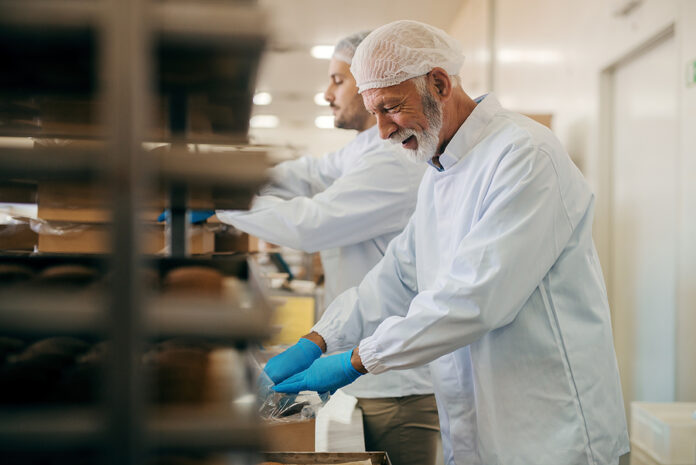
By Stephanie Lind, founder and Chief Business Development Officer at Elohi Strategic Advisors
In recent research, 40% of consumers considered environmental and sustainability issues to be the most pressing concerns about our food supply. For many in the food and beverage industry, this comes as no surprise. Alongside growing consumer awareness and concern, the food and beverage industry has developed more responsible sourcing, operations, and logistic solutions over the last decade. In fact, since 2020, the industry has seen how sustainability makes good business sense as people, planet, and profit converge. Many recent innovations that decrease carbon footprints also increase efficiency and reduce costs.
Recent developments and innovations have moved the industry forward still more, expanding sustainability initiatives into innovation, sales, and marketing. Changes in the ways we do things, brought on by the pandemic, by steps forward in technology, and by shifting consumer and customer expectations, have created opportunities for improving efficiencies and ecological sustainability — and there’s still more progress ahead.
More targeted innovation
The first step in reducing waste and increasing sustainability is all the way back at the drawing board, in research and development. Every business school student hears that 85% of new products fail. The environmental costs of those failed products can be enormous in any industry, and food and beverage is no exception.
Are you creating a product for the sake of creating a product, or is there a “there” there? Are you solving a problem, or are you creating a solution to a problem that doesn’t exist?
Without consumer research, companies can easily find themselves in a silo or an echo chamber, rather than in touch with the needs and desires of the people who will ultimately consume their products. Research can range from free information the government collects, like census data, to custom research specific to a brand’s anticipated market, to huge data subscriptions from companies like Datassential and Technomic. Manufacturers must balance the financial costs of each of those sources against the information and insights they’ll provide, and there is no one-size-fits-all-manufacturers or one-size-fits-all-situations answer.
Choosing the right data sources, drawing the right insights from the data, and applying those insights to your product, location, and market requires specialized expertise and experience. Skillfully applied data, whether collected specifically for your brand or purchased from a research company, will save you money in failed attempts and in more directed, effective marketing of successful products.
The more you know about what people want to eat or drink and why, the better decisions you can make, all the way down the line from product idea to manufacturing to packaging to marketing to sales.
Consumer research is important in any channel, and for the foodservice channel, end user research matters just as much. While a B2C product speaks directly to the consumer, foodservice products must also solve problems for foodservice operators. They must help operators address their three goals: bringing in more diners, increasing check size, and reducing expenses. Understanding these different operator goals is a key to success in foodservice for a supplier.
Operator research can tell you what you need to know about your product in the foodservice channel. Even if consumers want to eat your product, will chefs want to cook it? Is it distinct enough to inspire change in the back of house, or to make a chef switch from a current product? Can it appear across the menu, in multiple dayparts? Does it require special handling, preparation, or equipment? If so, how will operators respond to those requirements?
Like consumer research, operator research and end user surveys give brands the information they need to reduce financial costs and save time by allowing them to adjust and tweak products prior to production and scale.
While research does not guarantee a product’s success, it can help weed out the products least likely to succeed. This in turn can keep the enormous amount of waste — samples, products and packaging, sales and marketing materials, etc. — associated with failed products out of our landfills. Informed, targeted product development makes sustainability sense and fiscal sense.
More targeted sales and marketing
The COVID pandemic left a lasting impression on food and beverage. Necessity is the mother of invention, and the industry innovated and invented during 2020 and 2021 out of sheer necessity — not only to keep businesses open and running, but to feed the nation. We take some of those innovations almost for granted now, because they make sense economically and ecologically, and they’re here to stay.
Zoom and other online meeting platforms mean that sales teams can work remotely and cover larger regions. While these online meetings will likely never completely replace all in-person sales calls or trade shows, they offer us a greener and less costly way of doing day-to-day business.
On the retail side, delivery apps like Instacart and shopping apps like Amazon mean online presentation of products matters more than ever. Manufacturers can set their products apart by providing high quality graphics and product and nutritional information, as consumers shop and compare products during all hours of the day.
Similarly, on the foodservice side, operators often research product options online after hours, beginning at their distributors’ portals. Manufacturers can help ensure their products stand out from competitors by providing all the information operators need — details about sizes, quantities, packaging, plus the same kinds of visuals consumers want to see in retail, but specific to foodservice.
COVID didn’t invent social media, of course, or email and online marketing, but a year of quarantine helped us lean into those methods of marketing even more than we otherwise might have. As the internet has matured, online marketing has become a primary method of spreading the word about brands and innovation. It allows for marketing targeted toward segmented groups of potential customers, whether retail consumers or foodservice operators.
In 2024, QR codes that link to your contact information and website have replaced business cards and brochures. Many of the physical marketing materials we took for granted have become scarcer or have been replaced by digital-only versions — which are cleaner and greener. On the other hand, if your brand hasn’t embraced digital marketing, now is the time.
From a social media marketing plan, to email marketing campaigns, to SEO (Search Engine Optimization) and longform content on your website, savvy brands have moved away from paper to interact with both consumers and operators online.
Communicating electronically — through delivery and shopping apps in retail or distributor portals in foodservice, and social media, website, and email marketing — decreases both the financial and ecological spends necessary to reach customers and generate revenue. It results in decreased costs, higher efficiencies, and lower carbon footprints, and we all win.
Hitting the targets
In addition to decreasing costs, pursuing and achieving sustainability goals can serve as brand differentiators and increase sales, particularly as consumers focus on concerns like climate change, air quality, microplastics, and pollution. Building sustainability into your brand identity can positively change public opinion. In situations where taste, value, and convenience are about the same, a more sincere and more clearly communicated commitment to the environment can sway consumers and increase sales of your product.
Today’s consumers and operators research products more than ever before, and though changes like more careful research and development may remain hidden, companies can and should share information about their efforts. Operational changes and green initiatives deserve publicity and allow operators and consumers to make educated choices between products.
Consumers watch for industry responses to their concerns. The food and beverage industry addresses needs and builds relationships close to consumers’ hearts, through what they serve family and friends at home and where they eat away from home. Responding to consumers’ environmental concerns can help food and beverage brands hit both their own bottom-line targets and our communal targets for a safe and healthy world in the future.
 Stephanie Lind is the founder and Chief Business Development Officer at Elohi Strategic Advisors. Prior to Elohi, Stephanie spent over 25 years working for Fortune 500 companies including PepsiCo, Sysco, and McDonald’s supply chain partner Havi Logistics. Most recently, she led the global sales initiatives for Impossible Foods during their 2018 break-out year.
Stephanie Lind is the founder and Chief Business Development Officer at Elohi Strategic Advisors. Prior to Elohi, Stephanie spent over 25 years working for Fortune 500 companies including PepsiCo, Sysco, and McDonald’s supply chain partner Havi Logistics. Most recently, she led the global sales initiatives for Impossible Foods during their 2018 break-out year.

Credit: Source link














